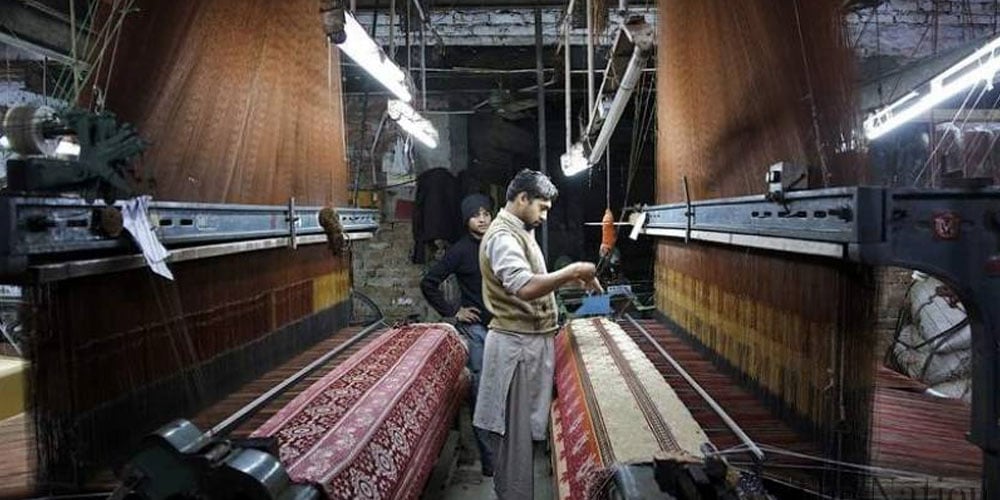
LAHORE: Pakistan has registered strong export proceeds after the textile exports reached its highest level of $15.40 billion in FY21 with the value-added segment registering an uptick of 28.50 per cent year-on-year (YoY) to reach $12.40 billion.
Hamza Kamal, a senior investment analyst at AKD Securities, said that the country benefited from the trade wars between China, the US and the European Union, and also business disruptions in competitive economies.
For June 2021, the textile exports stood at $1.70 billion, showing a growth of 57.80 per cent MoM and 73.1 per cent YoY, undergoing seasonal uptick in the demand, where segment-wise value and non-value-added exports posted a growth of 76.60 per cent MoM and 28.50 per cent YoY and 60.20 MoM and 4 per cent YoY, respectively.
Hamza said that it is expected that the textile exports would remain robust on the back of global economies opening up, generating demand for apparels and higher end-product prices.
“Going forward, we expect [the] cotton prices to surge on stronger demand expectation (local cotton prices stand at around highest level since 2011 at Rs14,232/maund, showing a growth of 6.4 per cent MoM, while outpacing the supply growth because of the concerns over the US cotton output, as drought gripping the Western Region of the US could have severe impact on the output.
Talking to BOL, one of the country’s largest textile exporters and Masood Textile Mills chief executive officer (CEO) Shahid Nazir said that this surge in exports is due to three reasons.
Firstly, there have been major disruptions due to the lockdowns in competitive countries like India, Bangladesh, Vietnam and Central America, Nazir added.
Secondly, the US has imposed restrictions on the Chinese cotton from the Xinjiang area, which constitutes 80 per cent of the Chinese cotton crop. This has led to massive disruption in the supply and demand side. This may last for a few years, as the US is in the process of passing a human rights bill against China. The bill has been passed by the Congress and now will go to the Senate, he added.
Lastly, the government policies due to the Covid have also helped exporters expedite their output, Nazir said.
Naveed Gulzar, another textile mill-owner from Faisalabad said: “In my view we did not benefit from the trade war between the US and China, rather due to [the] Covid in India and Bangladesh orders were diverted to Pakistan and our exporters performed well.”
The overall share in the world textile trade has marginally increased. Now the question is, if it is a one time growth or will it stay? He questioned.
“My observation is that if Pakistan corrects its long-term energy policy, adjusts US dollar value periodically, and does not massively increase the labour wages the orders will stay in Pakistan, as we performed well during this period,” Gulzar said.
He said the machinery required is now available and “we are better equipped”. One more question is what is the future of the cotton crop?
“We need to increase the size of crops now. We are on [the] verge of increasing our machinery and InshaAllah will feel better,” he said.
All Pakistan Textile Mills Association (Aptma) North Zone chairman Abdul Rahim Nasir said that the efficient policies by the government and the State Bank of Pakistan (SBP) led to investment in textiles, converting semi-finished goods, i.e., yarn and fabrics into home textiles and garments, which led to a double-digit growth.
The energy tariffs and duty drawbacks allowed Pakistan to remain competitive on the world level with the already available young human resources willing to put in hard work, he added.
“[The] only thing stopping Pakistan’s textile sector from reaching $20 billion exports is the long-term policy, which is not approved. If a 5-year policy is being announced, 20 per cent growth is a conservative target, which will give Pakistan $26 billion exports by 2023 and GSP+ status is a key,” Nasir said.
Acclaimed Economist Dr Qais Aslam told BOL that textile is the largest segment of the manufacturing sector of Pakistan. It consists of almost 60 per cent of industry, employs 25 per cent of the industrial labour force and is also the largest export sector of Pakistan.
Due to the diminished international trade between nations after the Covid-19 restrictions, the US-China trade war, increase in exchange rate against the US dollar with the Pakistani rupee at 162 and also due to aggressive budgetary support by the government to the textile sector, the production and exports witnessed a significant rise.
“The efforts of the government to support the textile sector in these hard economic times bore well with the earnings of $15.50 billion and a value addition of over $12.50 billion,” he added.
Dr Aslam expressed the hope that the government would give the same support to other exportable sectors of the economy and this growth trajectory would remain sustainable for a longer period of time.
Read More News On
Catch all the Business News, Pakistan News, Breaking News Event and Latest News Updates on The BOL News
Download The BOL News App to get the Daily News Update & Follow us on Google News.



